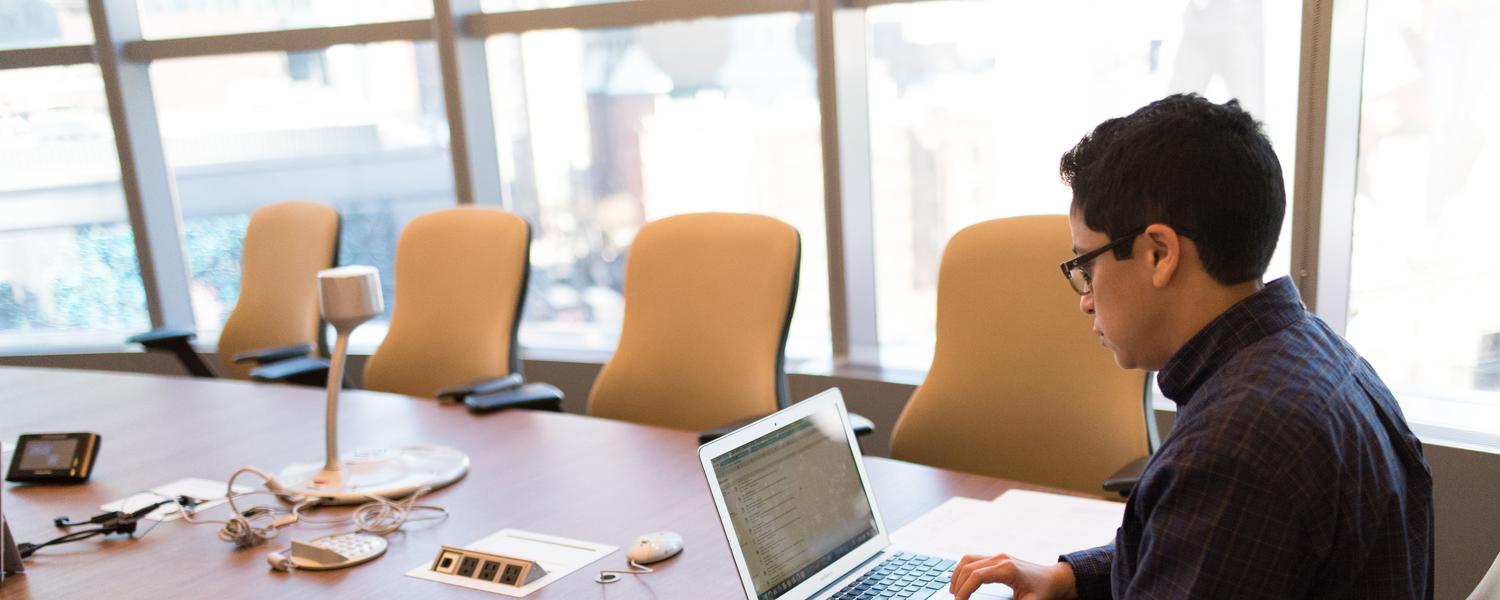
Managing Student Presentations When Teaching Remotely
Using no-contact boardroom style setup to facilitate online presentations
My course had team presentations scheduled at the end of March, when we had to move all our teaching online. How would we make this work as an online class? Here are my thoughts as I pieced together my plan of action.
Over the past four or five years, I have remotely coached Haskayne case teams from various locations in Canada and Europe by virtually joining the team, while they presented traditionally in-person in a set location. It was also more common to do video-based presentations but that approach came with drawbacks. For example, one student had 14 recorded versions on her computer of her final class presentation. Then, during a meeting, with faculty members from across the globe, one colleague suggested the idea of no-contact boardroom style presentations that they were going to try for an international case competition scheduled in April.
No-contact boardroom style?
What exactly is no-contact boardroom style? Students on the team are in different locations and one screen shares their presentation. Sounds simple, but there are issues. The body language and visual cues typical of a live presentation are not available. Timing becomes harder to manage both for the team and the host. There can be technical issues with sound and/or video. The person controlling the slides has a limited view. Depending on the viewing option, the audience is limited to what they can see (e.g. speaker view option will allow the audience to see just the speaker and not the host or the rest of the team). Managing the question and answer session from the audience can be difficult. Most importantly, it is hard to test what will happen with 37 participants before you go live.
The plan of action
Our original plan consisted of five-minute team pitches with ten minutes for questions and feedback from myself and other students to help the team build stronger final projects. In our adapted plan:
- Not everyone in the group had to present (but pretty much everyone did).
- Some flexibility was given on the five- and ten-minute time limits and we finished about the same time as I had originally planned. Some teams were closer to seven minutes. I managed the question period to ensure we stayed on time and on schedule.
- Students not presenting muted their audio microphones.
- Other students in the class had a Google form to offer feedback that I organized the following day and sent out to the groups.
- The chat feature was used to ask questions and add more feedback.
Our key learnings
- Be flexible with time within reason.
- Have students, who are not presenting, mute their video and audio function.
- Have those presenting use the gallery view during the screen sharing portion.
- Hide the students that have the video function turned off, so things like time cards from the host can be seen easier.
- Chat and Google form are awesome tools to manage questions and feedback, but make sure you watch the personal information you ask for on the form. The chat allows for a very manageable question and feedback component.
- Talk with students about the lack of visual and body language cues and recommend they practice beforehand.
Based off of the key learning outcomes we will continue to refine the process and format for upcoming presentations. Moving presentations online under the current environment has truly been an opportunity for us to utilize our ability to adapt, refine, and overcome obstacles.
Related content
Dealing with Challenging Behaviours in the Zoom Classroom
Five Principles for Meaningful Online Assessment
